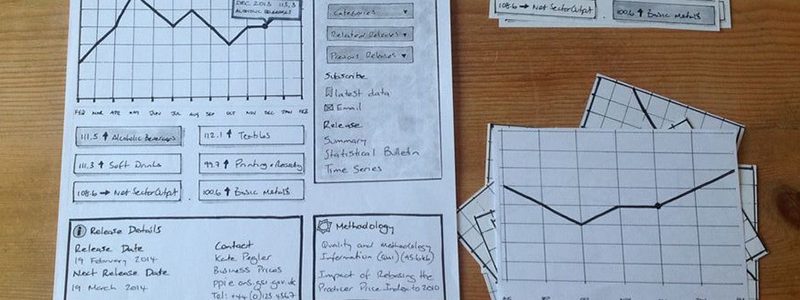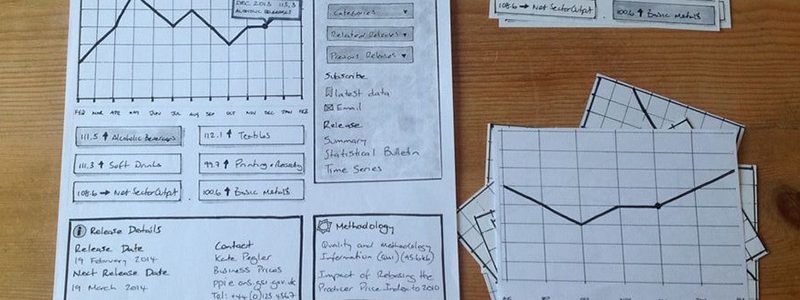The research behind the alpha
Posted by Jonathan Porton and Phillip Gardiner, the Alpha User Experience Team
The discovery phase
Like most web projects, our journey began with a discovery phase. Where ours might differ from others is that we already had the advantage of a mountain of relevant and recent user research to bring to the Alpha party.
A lot of research was carried out on the existing ONS website over the course of a year including developing a new taxonomy through studies with over 200 users, researching and prototyping the needs of users around the on-site search, and conducting interviews with users to understand their end goals and key journeys through the website. We looked at specific user needs around some of the content types such as statistical bulletins and observed how, and where, our data was used once it left our website.
These findings were cemented with a refresh of the existing ONS personas and, based on the outcome of that work, we conducted additional surveys and interviews with persona types we identified as not knowing enough about.
All in all we took feedback from well over 800 existing ONS website users of which we met in person with at least 150 of them.
Armed with all that user research we drew up our list of user needs and user stories and began to develop some rough prototypes and wireframes. At this stage It was really important for us to sanity check our ideas and proposed direction with some of our critical friends so we put these initial concepts in front of them and garnered feedback in a series of casual feedback sessions. This allowed us to refine the wireframes and make some big decisions on our overall approach which set us up nicely for the arrival of the design and development teams and the Alpha build phase.
- Paper prototyping
- Paper prototyping
Sprints
On your marks, get set, GO! After completing the discovery phase we moved into the Alpha build phase. This consisted of a number of development sprints – well 5 to be precise.
Each sprint had a different focus, ranging from: development based on specific user stories, re-design work following identified usability issues, through to fixing any found snags. However the one thing that remained consistent through all sprints was “putting the user at the centre of everything we do”.
Building on all the work undertaken in the discovery phase was done through ensuring we continued to engage and listen to our end users. This was primarily achieved through two activities:
User testing
User testing iteratively with our end users, enabled us to:
- Identify any key usability issues within the ‘Alpha’ prototype
- Identify any major usability flaws that prevented completion of key user tasks
- Assess what users made of specific parts of the website
- Discover (at a high level) users’ views and opinions around the design of the prototype
A further benefit of the user testing undertaken (and probably just as important) was it allowed us to get everyone in the project involved. From senior stakeholders through to developers, everyone bought into what we were doing and why – as GDS say “User research is a team sport”.
By making our user testing sessions open for anyone to observe. I think it’s fair to say, we not only used a small rainforest worth of sticky notes (anatomy of a good sticky note) to capture important information such as usability issues, but also enabled the project team and wider audience to better relate and understand the people they were developing the site for.
Critical friend sessions
These sessions involved taking the working prototype out to our list of critical friends. As with the discovery phase these sessions proved to be invaluable. Without exception everyone we met was brutally honest and utterly supportive. Ultimately these are the users who live the ONS website all day, every day and they want it to work as much as we do. The great thing about these sessions was that we were able to go off piste and explore unusual needs and specific concerns – which you don’t always get to do with structured usability sessions.
Looking back and reflecting on the sprints, we spoke to over 50 users, undertook approximately 25 hours of user testing, identified and addressed 60+ usability issues, and had 20+ people involved in the project turn up to watch our user testing sessions. But all good user researchers know that the numbers count for nothing if the product isn’t usable. We’ll let you be the judge of that!


3 comments on “The research behind the alpha”
Comments are closed.